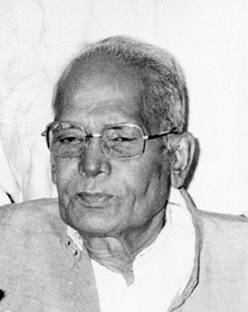Saansad Adarsh Gram Yojana (SAGY) | 02 Jan 2020
Why in News
According to the Ministry of Rural Development, only 252 Members of Parliament (MPs) have adopted gram panchayats under phase-4 of Saansad Adarsh Gram Yojana (SAGY).
- At present, the total strength of both Houses is about 790 which includes elected as well as nominated members.
Saansad Adarsh Gram Yojana
- The scheme was launched by the Prime Minister of India on 11th October, 2014 on the birth anniversary of Jai Prakash Narayan.
- Goal
- Under the Yojana, Members of Parliament (MPs) are responsible for developing the socio-economic and physical infrastructure of three villages each by 2019, and a total of eight villages each by 2024. The first Adarsh Gram (Model Village) was to be developed by 2016, and two more by 2019.
- From 2019 to 2024, five more Adarsh Grams must be developed by each MP, one each year. This implies that a total of 6,433 Adarsh Grams, of the 2,65,000 gram panchayats, will be created by 2024.
- Process
- Gram Panchayat: The basic unit for development.
- Lok Sabha MP: chooses a Gram Panchayat from within his/her constituency.
- Rajya Sabha MP: chooses Gram Panchayat from the rural area of a district of his/her choice in the State from which he/she is elected.
- Nominated MPs: choose a Gram Panchayat from the rural area of any district in the country.
- Action Taken
- The MPs engages with the community, facilitate the Village Development Plan and mobilise the necessary resources particularly from Corporate Social Responsibility (CSR) and philanthropies.
- The planning process in each village is a participatory exercise coordinated by the District Collector.
- MPs also fill up critical gaps in the plan using the Member of Parliament Local Area Development Scheme (MPLADs) funds.
Analysis
- Since the launch of the scheme, only 1,753 gram panchayats have been selected across four phases, way below the expected figure.
- In Phase-1 of SAGY, 703 MPs adopted gram panchayats but that number went down to 497 in Phase-2 and 301 in Phase-3, showing a gradual decline in subsequent phases.
- Specific To Lok Sabha: About two-thirds of Lok Sabha MPs are yet to select gram panchayats under Phase-4 of the scheme. The Lok Sabha has a total strength of 545 members which includes 543 elected members and two nominated members from anglo-Indian community.
Way Forward
- The vision behind the evolution of SAGY villages was to create model villages by ensuring convergence and dovetailing of schemes and its proper implementation on priority basis. However, the seriousness required to achieve the motto is lacking. MPs need to be more responsible towards the scheme.
- At the same time, the Ministry of Rural Development should ensure that the SAGY villages are dealt with the vision envisaged under the scheme and are not left behind.
Jai Prakash Narayan
- Jai Prakash Narayan was born on 11th October,1902 in Uttar Pradesh. He was an Indian political leader and theorist. He is popularly known as Lok Nayak.

- Narayan was educated at universities in the United States, where he became a Marxist. Upon his return to India in 1929, he joined the Indian National Congress (Congress Party).
- In 1932 he was sentenced to a year’s imprisonment for his participation in the Civil Disobedience Movement against British rule in India. Upon release he took a leading part in the formation of the Congress Socialist Party, a left-wing group within the Congress Party,
- He formed the Praja Socialist Party in 1952.
- Soon becoming dissatisfied with party politics, he announced in 1954 that he would thenceforth devote his life exclusively to the Bhoodan Yajna Movement, founded by Vinoba Bhave, which demanded that land be distributed among the landless.
- In 1974, the students of Gujarat requested him to lead the Nava Nirman Andolan. The same year in June, he gave a call for peaceful “total revolution” wherein he exhorted the students to rise against corrupt political institutions and asked for a closure of colleges and universities and to devote their time to rebuild the nation. It was this time in the history that he was popularly called “JP”.
- This movement finally culminated in the proclamation of Emergency and subsequently in the victory of the “Janata Party” which formed the first ever non-Congress Government in the Centre in March 1977. He had the credit of bringing all the Non-Congress Parties under single umbrella of Janata Party.
- As a tribute to this modern revolutionary, the Government of India posthumously awarded him Bharat Ratna, the highest civilian award of the country in 1999.
